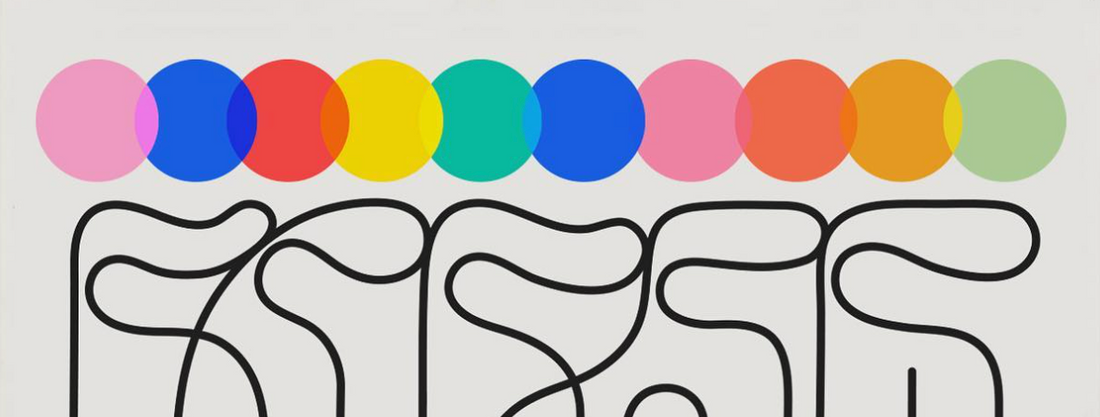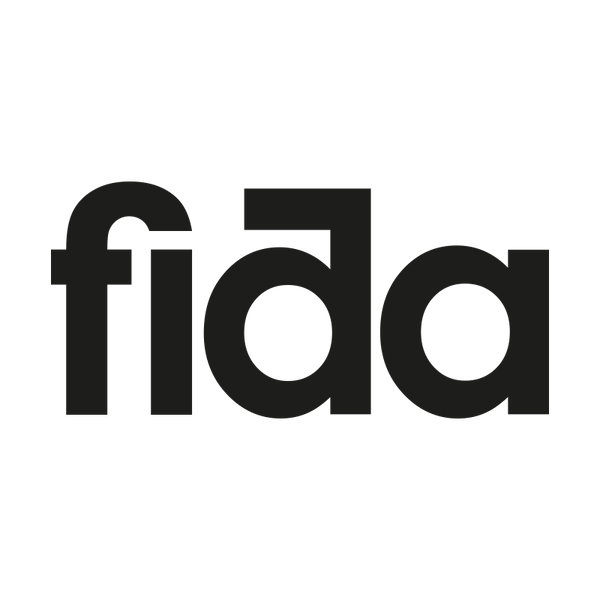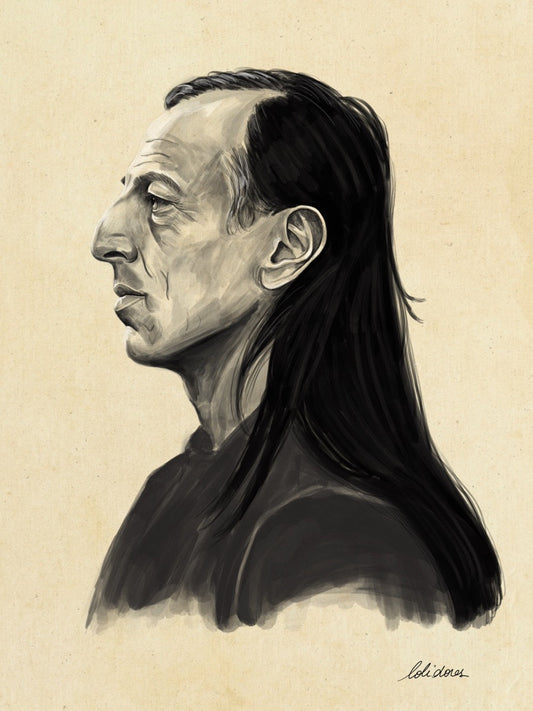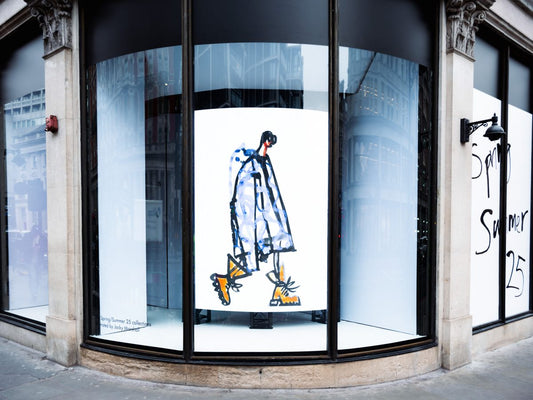
The Poetry of a Single Line with Jonathan Calugi
Share
Jonathan Calugi’s art is unmistakable - fluid, rhythmic, and seemingly effortless, like a dance between pen and paper, yet behind each line is a carefully honed balance of spontaneity and discipline. We connected with the Italian artist to explore the inspirations, processes, and philosophies that shape his distinctive world.

For Calugi, art was always within reach - quite literally. Growing up surrounded by pens, paper, and colour, thanks to his parents’ stationery shop, creativity was second nature. But there was also a deeper connection. “My grandfather was a sculptor of carnival floats in New Orleans,” he shares. “I didn’t grow up with him, but the idea that art could be a possibility was a concrete presence.” Without formal training, his path was shaped by passion rather than curriculum. “Fortunately, in the end, my passion became my life.”

Building his artistic voice was a process of daily discovery. Without a traditional art education, he created his own “personal library,” drawing from legendary designers and artists. “Paul Rand, Bruno Munari, all midcentury design, Ikko Tanaka, Villemot - many, many more. Design helped me bring order to my total disorder.” As his exploration deepened, fine art began to weave into his practice. “I started going deep into 20th-century artists - Miró, Picasso, and Marino Marini from my own city, especially his graphic work.”

Beyond visual art, music has played a defining role in Calugi’s creative process. “When I was 15, I started doing rap music. I think it influenced my work a lot - repetition, loops, rhythms, balance. All of that is part of my work today.” Recently, a new source of inspiration has entered his world - fatherhood. “Right now, I try to steal every stimulus from my son.”
 Calugi’s work is a visual narrative told through a single, continuous line. “My drawings are almost a line that tells an unconscious story. Love, connection, humanity, movement, music, life… these are always present in my chaotic sketchbook.”
Calugi’s work is a visual narrative told through a single, continuous line. “My drawings are almost a line that tells an unconscious story. Love, connection, humanity, movement, music, life… these are always present in my chaotic sketchbook.”
His process is both organic and methodical. “Paper, pen, and freedom - this is where it starts. Then, I find a crazy ugly sketch and start to rework it like a sculpture in Illustrator. As a designer, I try to minimise my idea until I find the right balance.”

Despite an already impressive portfolio, Calugi is always looking for new creative challenges. “I would love to collaborate with an animator - to create a step-by-step video where everything transforms, building into something I can’t even imagine right now. Or with a furniture designer to bring my lines into the physical world.”
Working on a mural is a vastly different experience for Calugi compared to his other artistic endeavours. “I love murals! For me, they’re like therapy. All the hard work - planning, defining, understanding - is done beforehand. So when it’s time to paint, it’s like a long, amazing song where you can just relax and enjoy what happens.”

Among his most memorable works, two stand out. “One was for Airbnb. The creative director told me to do what I love most at that moment - I felt like, yeah, I could fully express myself for a superb client. It was amazing!” Another was a mural for Scalofarini in Milan. “Seeing an entire building covered in my lines on all sides - it was crazy!”

While creativity often feels like a force of nature, Calugi understands the importance of rhythm and balance. “I have a daily routine, but it’s more for life than for creativity. I love sports because it balances the creative process. And I’ve learned that off-days, days with no ideas, days when you don’t feel like doing anything - these are normal and necessary. They make the days of high creativity possible.”

For young creatives navigating the industry, Calugi’s advice is clear and refreshingly honest. “Follow your mistakes. The idea of being perfect is crazy - and perfection is boring! It’s normal for people not to like or understand your work. It’s like a game - if you win immediately, the game ends immediately. The best part is that you always have a new page in your sketchbook to fill. Start with some letters, create some words, and one day, if you want, a poem.”

And perhaps the most important advice he’s received? “A creative director at Apple once told me, ‘Don’t forget to do this for you.’”
For Jonathan Calugi, every line is an opportunity - a reflection of life’s rhythms, movements, and emotions, captured in the simplest yet most profound way possible.

See more of Jonathan Calugi:



